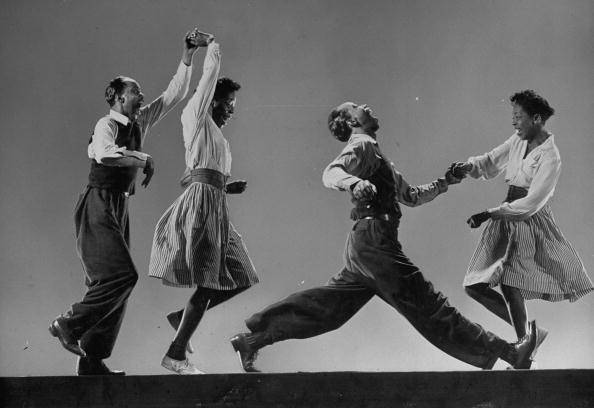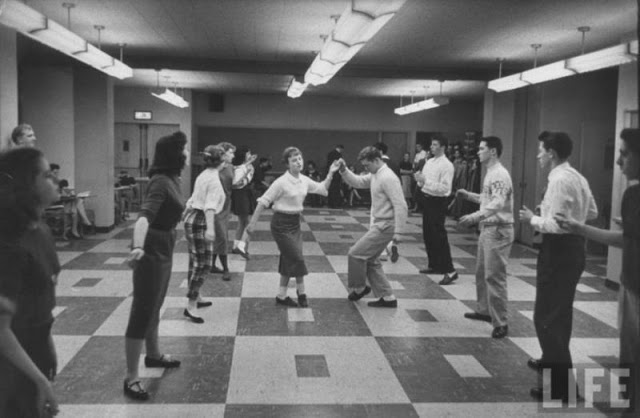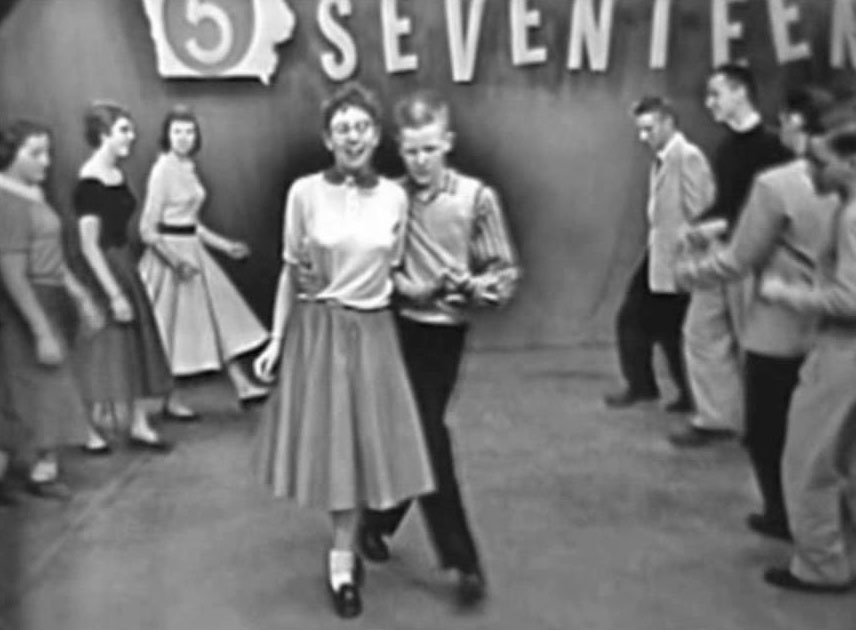Dance has long been a means of cultural expression, social connection, and shared joy. Among the most memorable dance trends of mid-20th-century America, The Stroll holds a special place thanks to its accessible steps, broad popularity, and lasting cultural significance.

Origins of The Stroll
The Stroll is a line dance that became nationally popular in the late 1950s. Its breakout moment is often credited to American Bandstand, the influential music and dance TV program hosted by Dick Clark that aired nationally starting in 1957.
American Bandstand introduced new music and dance trends to audiences across the United States. The Stroll was first widely broadcast on the show in late 1957, and its popularity peaked in 1958. It was often performed to “The Stroll” by The Diamonds, a song that reached number 4 on the Billboard Hot 100 in early 1958.

Choreography and Style
Unlike more intricate ballroom styles or fast-paced jitterbug moves, The Stroll’s choreography is straightforward and accessible. Dancers form two facing lines—traditionally men on one side and women on the other. Couples take turns stepping into the center to “stroll” down between the lines, often with personalized styling before returning to their places.
This setup made The Stroll especially popular at school dances, sock hops, and community events, welcoming dancers of all skill levels. It offered a balance between structure (the lines) and freedom (individual variations), creating a shared social rhythm that encouraged participation and personal expression.
Cultural Context of the 1950s
The late 1950s in the United States was a period of cultural transformation. Teenagers were emerging as a distinct social group with disposable income and growing cultural influence. Music, radio, and television programs increasingly targeted this demographic.
Dancing was central to this new teen culture. Events like sock hops—dances in school gyms where students often removed their shoes to protect the floor—became popular venues for The Stroll. The dance’s appeal lay in its simplicity and openness to individual style, reflecting a generation balancing social conformity with new expressions of individuality.

Role of American Bandstand
American Bandstand played a vital role in popularizing The Stroll across the country. The program reached millions of viewers, showcasing teenagers dancing to the latest hits in a format that allowed audiences everywhere to see and imitate the steps.
It also played a historic role in breaking down regional barriers in American popular music. By broadcasting The Stroll nationally, American Bandstand turned a local or regional dance trend into one of the earliest mass-media-driven dance crazes.
Historical Recordings and Documentation
For those interested in exploring The Stroll’s historical documentation, there are original video recordings of American Bandstand episodes preserved in archives. Institutions such as the Paley Center for Media and university collections maintain television archives with 1950s dance program footage.
Audio recordings of The Diamonds’ “The Stroll” are also widely available on streaming platforms, offering an authentic soundtrack for anyone learning or teaching the dance today.

Enduring Appeal and Modern Revivals
Unlike many short-lived dance trends, The Stroll has endured, thanks to its accessible structure and timeless charm.
Today, dance studios, retro-themed events, and rockabilly festivals frequently include The Stroll in their programming. In the United States and Europe, rockabilly festivals often feature The Stroll in dance competitions and social events.
Because it is easy to teach and learn, The Stroll is also used in:
-
Dance classes for all ages
-
School cultural history units
-
Senior center recreation programs
Its simple formation and rotating partners make it inclusive, encouraging participation across generations.
How to Learn The Stroll Today
If you want to learn The Stroll, many resources are available:
-
Dance studios often include 1950s social dances in their curriculum.
-
Online video tutorials on reputable dance instruction sites demonstrate the basic steps and variations.
-
Community centers and retro-themed events may offer live instruction.
Learning The Stroll is not just about mastering steps; it’s about engaging with a piece of cultural history.
Educational and Social Value
Beyond its entertainment appeal, The Stroll offers educational insights into American history. It illustrates:
-
Mid-20th-century social customs: showing how teenagers gathered and socialized before the digital age.
-
Mass media’s role: demonstrating television’s power to standardize trends across the country.
-
Intergenerational connection: creating opportunities for grandparents and grandchildren to share a common dance tradition.
Teachers and cultural educators sometimes use The Stroll to discuss themes like post-war American society, youth culture, and the impact of television on social trends. Museums and cultural organizations occasionally feature The Stroll in living history programs to recreate 1950s social life.
Preserving the Legacy
Cultural preservation groups, local historical societies, and dance historians are working to ensure that dances like The Stroll remain part of our shared memory. Their efforts include:
-
Archiving video recordings, music, and oral histories from those who danced it during its original heyday.
-
Hosting themed events to introduce the dance to new generations.
-
Documenting regional variations to capture the full range of The Stroll’s historical development.
Such work helps maintain the rich diversity and cultural value of historic social dances.

Joining the Community
Enthusiasts around the world share photos, video clips, and memories of The Stroll in online groups dedicated to 1950s music and dance. These communities provide spaces for people to connect, exchange tips, and share their love for mid-century culture.
By joining these groups, you can:
-
Share personal experiences with The Stroll
-
Learn about dance techniques and variations
-
Stay updated on events or workshops featuring classic dances
Engaging in these communities helps keep The Stroll alive as a living tradition rather than a static historical artifact.

Conclusion
The Stroll remains an enduring reminder of a unique chapter in American cultural history. Its straightforward steps, broad accessibility, and timeless appeal demonstrate the universal human desire for connection through movement.
By learning, performing, and sharing The Stroll today, dancers honor not only the choreography itself but also the spirit of community, creativity, and joy that made it such an important part of 1950s social life.
Whether you’re a dancer, educator, historian, or simply someone who loves the style and music of the 1950s, The Stroll offers a meaningful way to celebrate and preserve this lively cultural tradition for future generations.
Sources
-
Rock and Roll Hall of Fame: rockhall.com
-
Billboard Hot 100 Archives: billboard.com/charts/hot-100
-
Smithsonian Magazine on 1950s Social Dance: smithsonianmag.com
-
Library of Congress American Life History Collection: loc.gov
-
Paley Center for Media Television Archives: paleycenter.org
